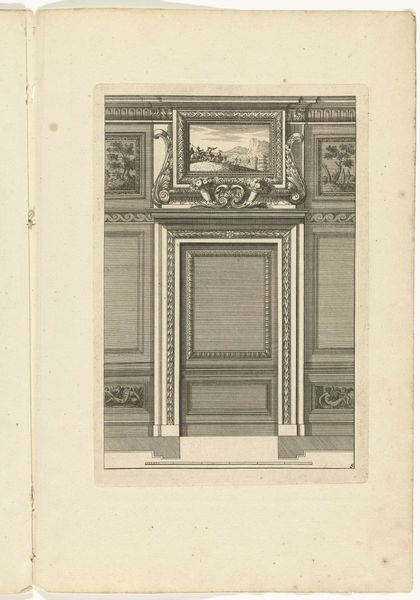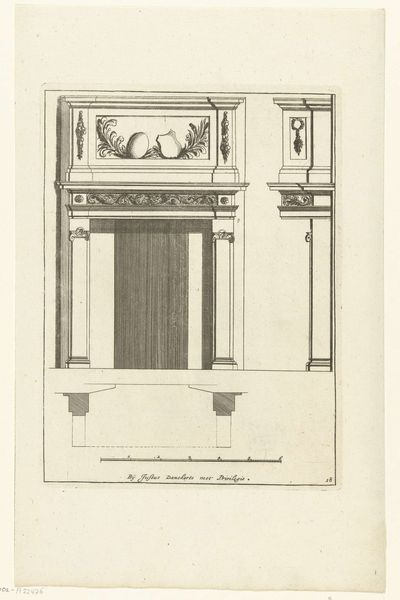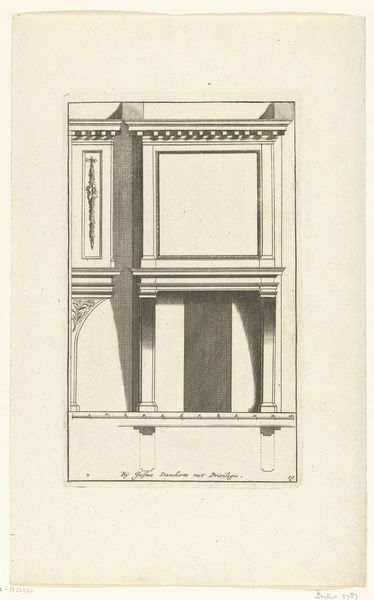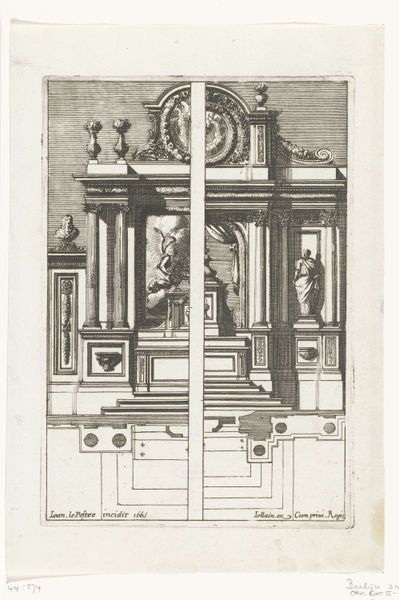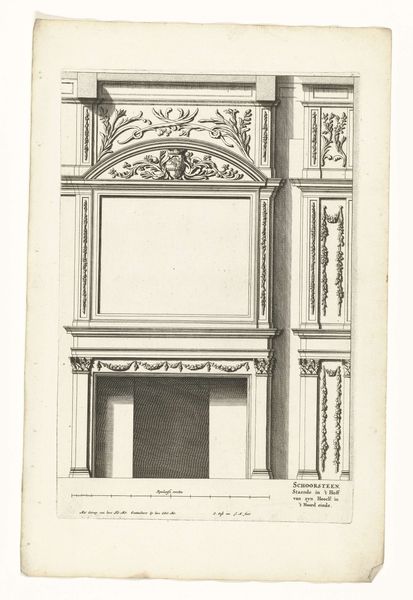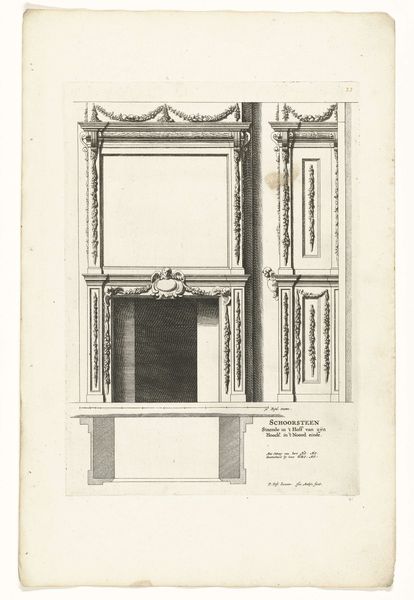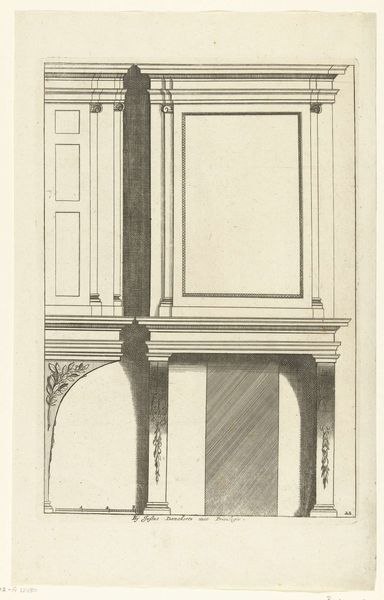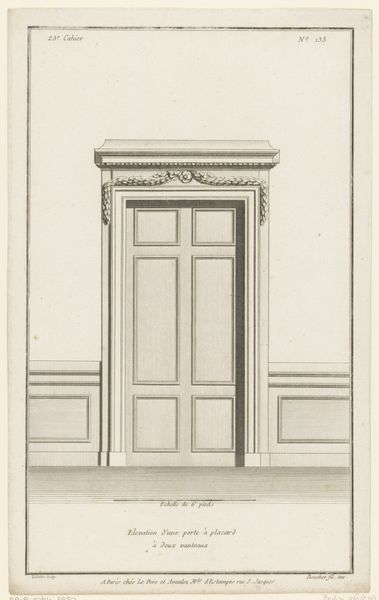
drawing, etching, engraving
#
drawing
#
baroque
#
etching
#
etching
#
geometric
#
line
#
history-painting
#
engraving
Dimensions: height 151 mm, width 230 mm
Copyright: Rijks Museum: Open Domain
Editor: Here we have Cornelis Danckerts’ “Wall Arrangement with a Bust” from around 1675 to 1686. It’s a drawing, an etching and an engraving all in one! The clean lines give it such a formal feel. What visual cues jump out at you? Curator: Well, I am immediately struck by the heraldic imagery, which seems almost aggressively declamatory. The eagle and lion, symbols of power and authority, frame what appears to be a bust within a medallion. Consider how this communicates the patron’s self-image. Do you get a sense of the cultural context in which such imagery would resonate? Editor: Definitely a statement piece. The symbols are pretty straightforward, but what about the, uh, *bust* itself? Does it depict a historical figure, or is it more symbolic? Curator: The bust’s specific identity isn't the core message. It represents an ideal – perhaps of wisdom, virtue, or leadership – something to which the patron aspires or associates with. What happens when you think about this “Wall Arrangement” less as architecture and more as a meticulously designed family crest writ large? Editor: That’s a great way to think about it! Seeing the wall itself as a crest kind of personalizes it. I hadn't considered the psychological weight of these symbols and how that shapes one's experience in a space like this. Curator: Exactly. Visual language builds upon generations, each generation reinterpreting the same symbols for new effect. This space broadcasts dynastic aspirations through the enduring imagery of power, family, and honor. Editor: It’s like they're creating their own mythology. It gives me a lot to think about. Thanks! Curator: My pleasure! The enduring resonance of symbols ensures that art always echoes across the ages.
Comments
No comments
Be the first to comment and join the conversation on the ultimate creative platform.



